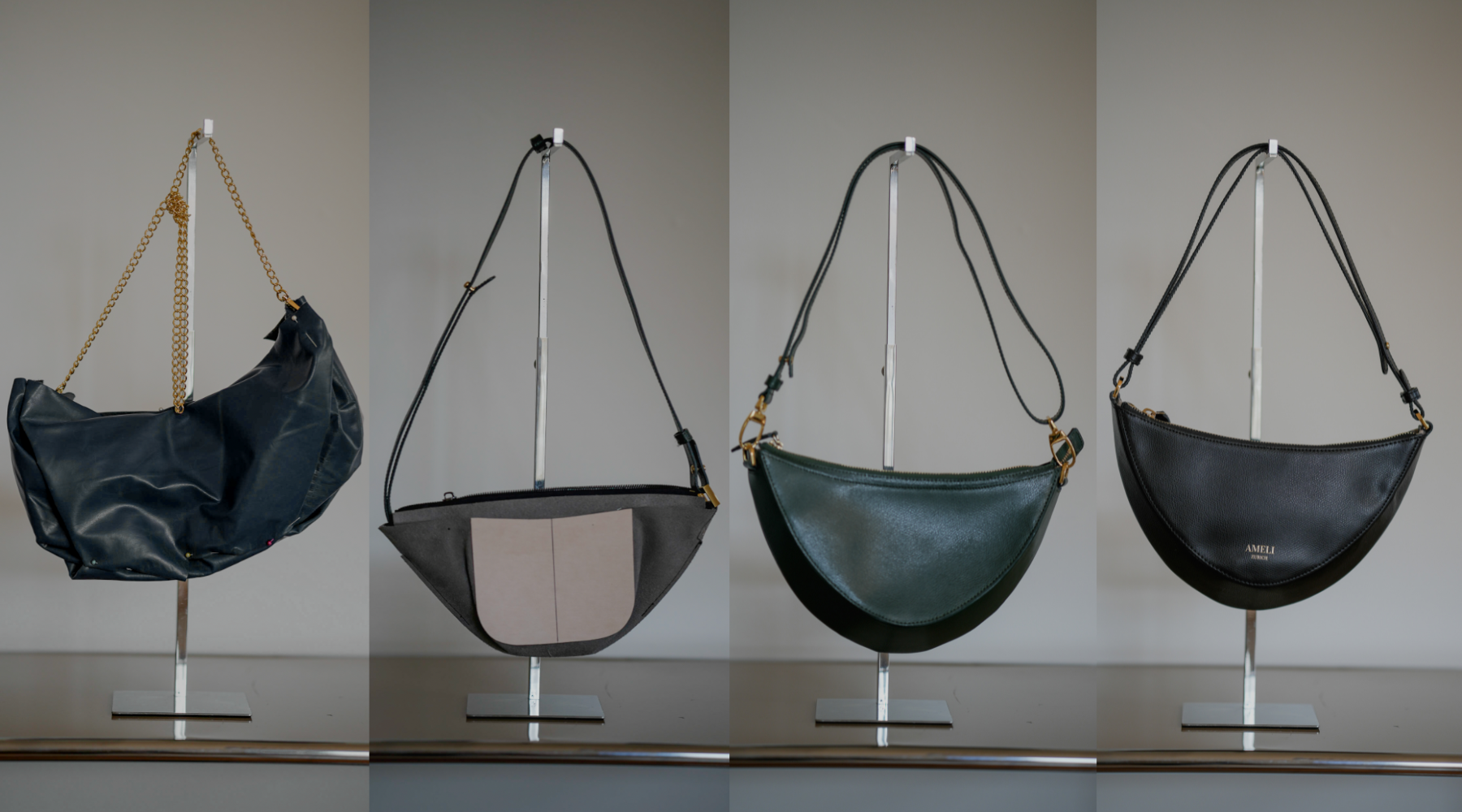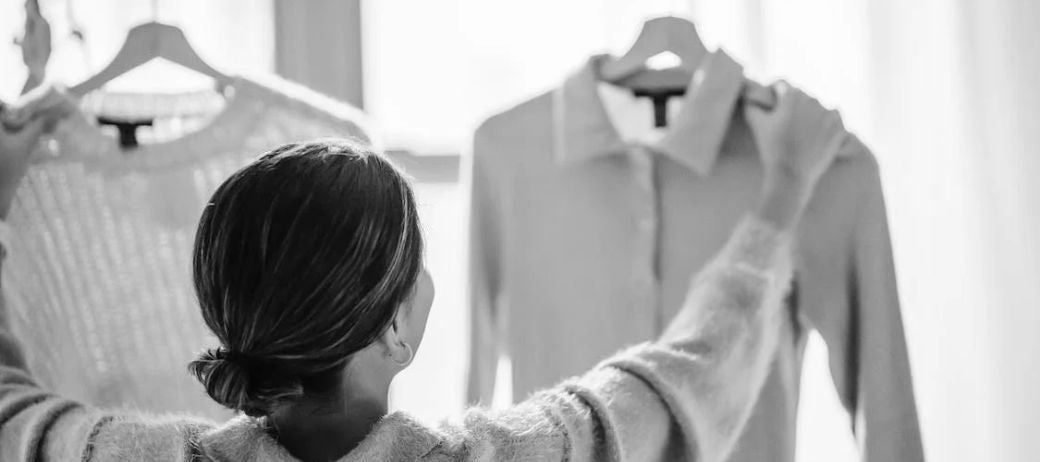
A look behind the scenes of leather production
While leather has proven itself as a robust and durable material for centuries, its production and use has come under heavy criticism in recent years from an environmental point of view. One aspect of production in particular has come in for criticism - the use of chemicals during the tanning process and their impact on people and the environment. As an essential part of leather production, tanning prevents the leather from rotting by preserving it. In this process, the animal skin is treated with so-called tanning agents, which strengthen the collagen matrix and thus ensure the suppleness and durability of the leather. Two tanning methods are particularly well known - chrome tanning and vegetable tanning.
In line with our goal to be transparent about the processes behind our bags, we want to answer the most important questions for you here:
1. What is the difference between chrome and vegetable tanned leather?
In chrome tanning, the animal skin is placed in an aqueous mineral salt solution and rotated in large vats for several hours. This is followed by further steps, such as greasing the leather, until the desired material properties are achieved. One of the material properties that can be achieved mainly by tanning with the mineral salt is its lightness. The animal skin does not absorb the chromium quite as well, which is why only about 1.5 - 4 % of the final weight is made up of the mineral salt.
In vegetable tanning, the animal skins are not impregnated with mineral salts, but - as the name suggests - with vegetable tanning agents. Many plants produce this natural tanning agent, known as tannins, to counteract their own decomposition and ward off possible predators. It can be obtained from bark or olive leaves, for example. Animal skin absorbs the tannins better - up to 20% - but in turn this leads to the leather being weighed down by the increased absorption and losing its lightness. In addition, the accumulation of tannin in some plants can take 20 to 30 years.
Of the leather produced worldwide, about 80-90% is chrome tanned and about 10-12% is vegetable tanned. In direct comparison, chrome tanning is faster than vegetable tanning, which can take several months. In addition, the process is also much more water-efficient. This is mainly due to the high water consumption for the growth of the plants and the production of the vegetable tanning agent.
2. Why do we use chrome tanned leather for our bags?
Decisive for us to use chrome tanned leather are mainly the incomparable material properties that only chrome tanning can produce. Compared to vegetable tanned leather, chrome tanned leather is more resistant to dirt, heat and water, twice as tear resistant and lighter. In addition, vegetable tanned leather is naturally darker and changes color over time. In contrast, chrome tanned leather is lighter in color and is accordingly easier to dye, especially for light colors, and remains colorfast over time. Since the durability and functionality of our bags are top priorities, chrome tanned leather was and is the best choice for our bags.
In recent years, the use of mineral salts during the tanning process has been heavily criticized, and there has been increased attention to the health and environmental consequences. So why do we continue to use chrome tanned leather?
3. How harmful is chemical tanning really?
In Germany and the EU there are very high standards and guidelines (use of high quality tanning agents, production regulations, ...) that tanneries have to comply with. In principle, each tanning method has advantages and disadvantages, and if the strict guidelines are followed, none of the methods is more harmful to the environment or health than another.
Chromium is by far the most effective tanning agent, for which there are clearly convincing arguments. In fact, because of its chemical nature, comparatively fewer chemical substances need to be used throughout the process. As already mentioned, the tanning method also involves significantly less water and time than tanning with vegetable tanning agents.
4. Why does chrome-tanned leather have such a bad reputation?
If the tanning process using the mineral salt chromium is actually not that much worse than vegetable tanning and may even have advantages, then where do the concerns come from?
According to the UN Agriculture Organization, more than half of the leather produced is used in the fashion industry. However, about 80% of it is not produced under the European guidelines already mentioned, but in countries like Bangladesh and China. Not only is the production and tanning of the leather anything but environmentally friendly, but animal husbandry and labor protection in many developing countries are far from European guidelines.
Two parties are particularly affected by the lack of regulations and monitoring: the workers and the environment. Due to the lack of protective clothing and occupational safety measures, workers in the tanneries suffer from skin irritations, cancer and even blindness. Despite the poor working conditions, for many this is the only way to feed their families. In addition, unfiltered water residues from production enter the environment and seep into groundwater, affecting nature, animals and people.
All of this is just a fraction of the negative consequences of the chemical tanning industry. The leather industry is and remains a ruthless business. As an end consumer, every individual who buys a leather skirt, furniture, shoes or bags has an impact on the industry and the practices that are lived.
5. What can you do as an end consumer?
It is important to realize that leather should not be a cheap fast fashion product, but a high quality luxury product. Fair, sustainable production and animal husbandry have corresponding costs. So a product that is too cheap is a first sign that something may be wrong here. But also many of the expensive luxury brands, pocket the proceeds rather than invest in a fair production. Although it may not seem like it at first, we as individuals can very well effect change in the leather industry. Every company relies on their products to sell. If only sustainable products made under fair conditions - for people, animals and the environment - are purchased, companies will have to change to remain competitive.
Here's a list of things to check before you buy:
- Do you know where the company you're buying from sources its leather?
- Under what conditions was the leather processed? Are there any quality seals you can check?
- If you can't find any information on this, or if it's very difficult to find, is something being deliberately concealed here?
6. What does it take from the companies?
The elementary point of the whole thing is: TRANSPARENCY. Many of the companies, especially big luxury brands, do not make available information about the origin of their leather or generally their products and labor. Even when asked about their suppliers, it is almost impossible to trace the path of the leather. More transparency regarding the supply chain not only leads to a rethinking among consumers, but also forces companies to change their practices. In the long run, this can help promote environmental, human and animal welfare and improve product quality. Companies should have an open, honest dialogue with their stakeholders and customers to regain lost trust, and disclose information about their suppliers.
We only use leather from reputable Italian tanneries for our products, which comply with EU standards and directives. The leather is a waste product of the meat industry.
In order to act as resource-conscious as possible, we use leather scraps for our accessories wherever possible and produce only in small margins to avoid overproduction.
This educational work is extremely important to us, because we believe that leather or the leather industry per se is not bad, but it needs, as with many other things, a very conscious handling and a lot of transparency to be able to improve this industry sustainably. Both as a company, but also as an end consumer.





